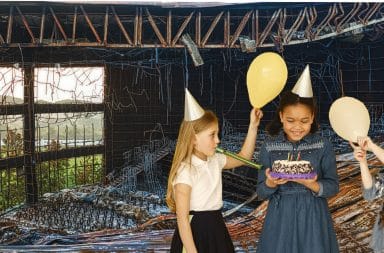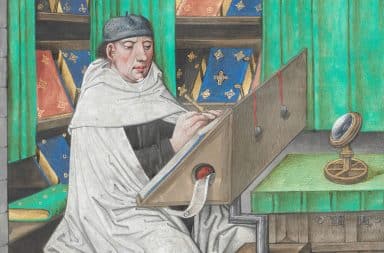No one can control how history will view them. I personally wish to be remembered as a sexy firefighter, but, no matter how many racy fireman-of-the-month calendars I buy my way into or photo shoots that I simply run through both naked and screaming, there’s just no guarantee that history will remember me that way.
So too, perhaps, for Paul Klee. Klee was a Swiss German, Modernist artist that never really fit into the generic conventions of his day. Cubist, Surrealist, Expressionist, Klee stood apart from all these yet was influenced by each of them.
His art is frequently geometric and, at first blush, childlike, but the apparent simplicity of his work hides deeper meaning and sorrow, much like when my roommate eats an entire tub of yogurt in a single sitting. Yet, for all Klee’s productivity, he is often regarded more as a philosopher, one who understood modern art better than almost anyone. Klee’s writings are sprawling and trenchant commentaries on the nature and meaning of art. Posterity has latched onto those words like an infant to a teat. It is in that spirit of oral fixation that I gleefully announce a new teat upon which to suckle!
For the first time, Paul Klee’s childhood diaries have been uncovered. These writings give deep insight into the artist-cum-philosopher-cum-brat.
Shapes
The cow goes “moo.” The sheep goes “baaa.” The rhomboid stretched diagonally across a three-dimensional plane goes “abstraction is without value.”
The playground is a zone of geometric violence. Each shape violates the other and itself. How am I to “play” in this maelstrom of barbarity?
Mother has childproofed the entire house. This disrupts the very contours of existence. Nevertheless, I must persevere. Leading with my fontanelle, I will uncover the lost vertices of this structure.
Candies simulate all known shapes and perhaps the unknown ones as well. To truly understand the organic character of their structure, it behoves one to choke on their saccharine geometry.
Jens is my bully. The acute angles of his fists resonate with the tonalities of my suffering.
Colors
Teacher once again crowned me with the white dunce cap. She fancies herself a milliner. However, if she truly wished to humiliate me, she would dye the cap orange. White merely mediates a deviation of perspective, while orange discharges the tension intrinsic to stupidity.
Today I made a booboo. Red came out. Such a strange shade. It evokes both the subjective distance that characterizes modernity and the very nature of my ouchie.
I colored the keys on father’s piano an array of hues. His anger perplexed me. Can’t he see that the dynamism of this spectrum moves toward unity and not away from it? At the very least he ought to recognize the pretty colors.
Order and Disorder
Messiness is the natural order of things. When mother tells me to pick up my toys, she does not realize that she fights against the very essence of existence. No, my train will remain here, until the cosmos finds a proper place for it.
Bedtime is a concept without antithesis.
The mobile represents an idealized balance of forces, a perfect equilibrium between the tiger, the elephant, the zebra, and the monkey.
Peek-a-boo. Peek-a-boo. Peek-a-boo. What sorcery is this? Only a demon could so affect the utter destruction and recreation of his countenance at will.
Motion
The static narrowness of fingerpainting betokens the failure of all pictorial representation.
I stumble not for lack of motor skills but rather to better apprehend the synthesis of the vertical and the horizontal.
Experience can only be comprehended in fragments. My binkie is no binkie until it crosses the plane of my num-num zone.
Texture
A painting that lacks texture is without substance, like a sippy cup without juice or a diaper without bad doodie.
Yesterday I coated myself in peanut butter. Mother was furious and rightly so. I chose the smooth over the crunchy. How foolish I was to rob us both of such tactile revery.
Granulation is itself a language. Through haptic interaction, we gain insight into the very nature of a work: what it means, the tears it has cried, and how best to fit it within one’s mouth.


